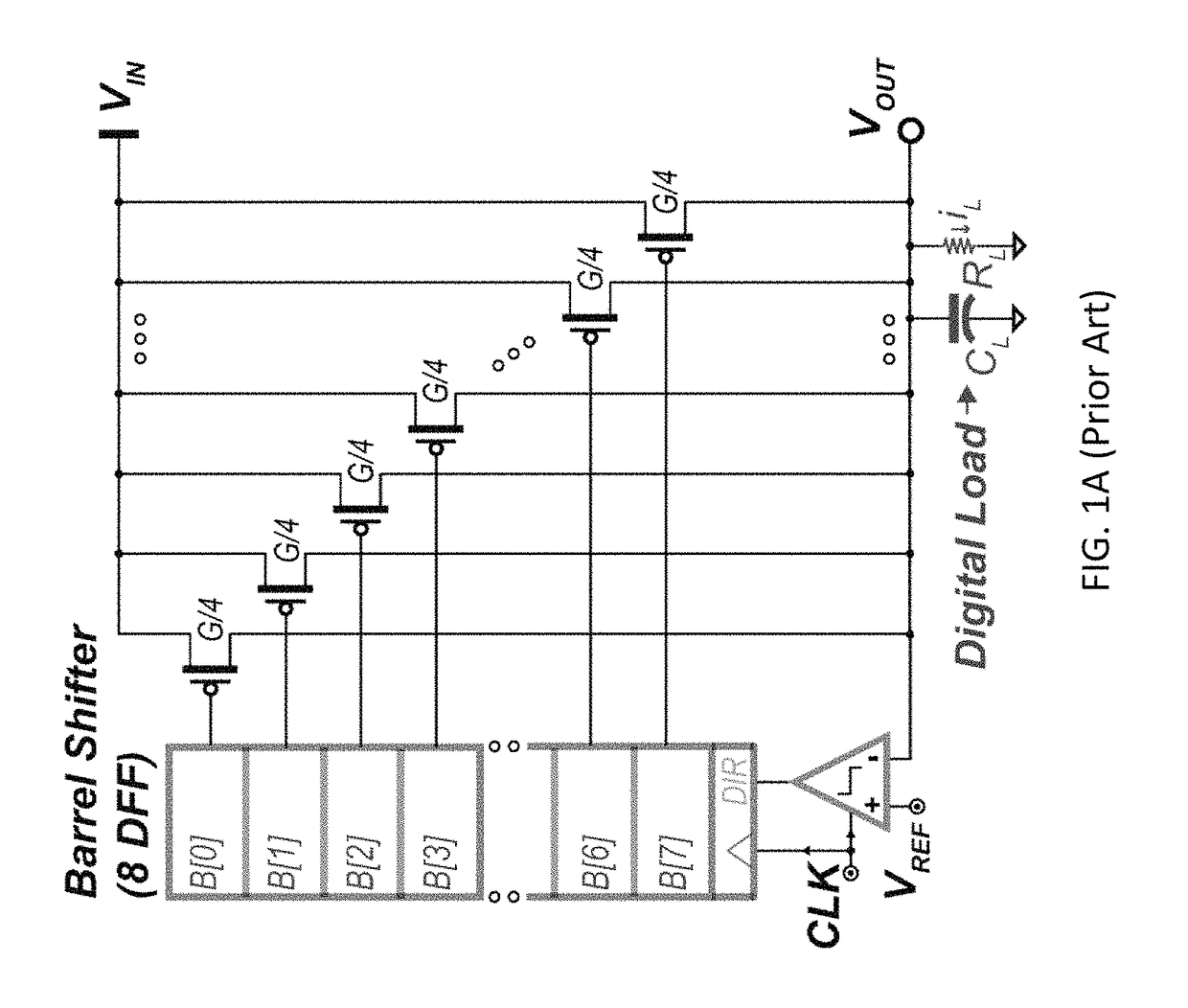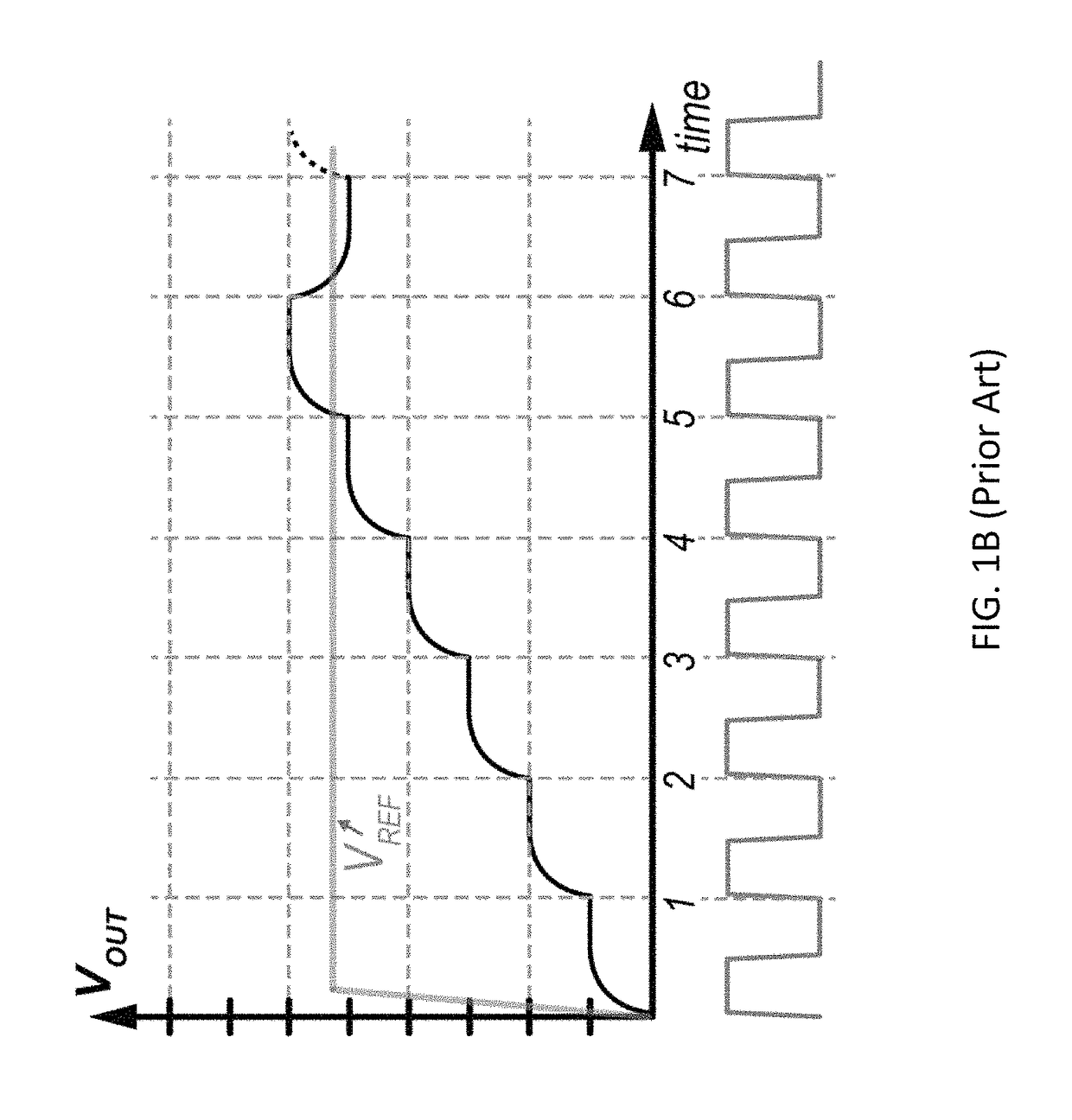Successive approximation digital voltage regulation methods, devices and systems
a digital voltage and approximation technology, applied in the field of digital voltage regulators, can solve the problems of insufficient digital load, inability to operate with such input voltages, and inability to regulate and stabilize digital voltage regulators, and achieve the effect of stable voltage regulator operation
- Summary
- Abstract
- Description
- Claims
- Application Information
AI Technical Summary
Benefits of technology
Problems solved by technology
Method used
Image
Examples
Embodiment Construction
[0053]Preferred embodiments provide a recursive all-digital LDO (RLDO) circuits and methods that enable stable and pragmatic binary searches, and avoid large staircase overshoots / undershoots during binary search steps by operating from a clock whose frequency is faster than the time constant of the load. Stability is provided by a variable-coefficient proportional derivative compensation. Steady-state errors are avoided with hysteretic pulse width modulation (PWM) control that also enables sub-LSB (least significant bit) load current regulation. Loop-interruption logic avoids large overshoot / undershoot that can result from a sudden IL or ΔVIN step change occurs in during the binary search [after deciding the first few most significant bits (MSBs)].
[0054]A preferred embodiment recursive all-digital LDO (RLDO) consists of a binary weighted PMOS switch array controlled by a recursive successive approximation (SAR) controller that performs coarse regulation via a recursive binary search...
PUM
 Login to View More
Login to View More Abstract
Description
Claims
Application Information
 Login to View More
Login to View More - R&D
- Intellectual Property
- Life Sciences
- Materials
- Tech Scout
- Unparalleled Data Quality
- Higher Quality Content
- 60% Fewer Hallucinations
Browse by: Latest US Patents, China's latest patents, Technical Efficacy Thesaurus, Application Domain, Technology Topic, Popular Technical Reports.
© 2025 PatSnap. All rights reserved.Legal|Privacy policy|Modern Slavery Act Transparency Statement|Sitemap|About US| Contact US: help@patsnap.com



